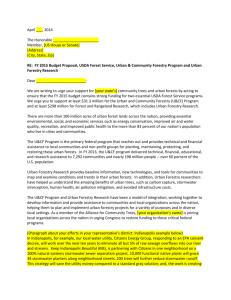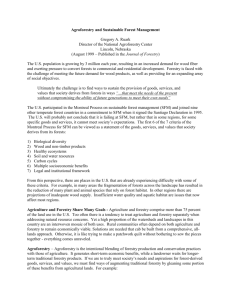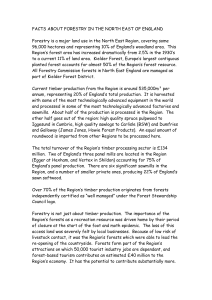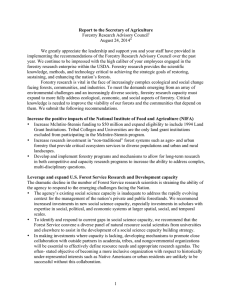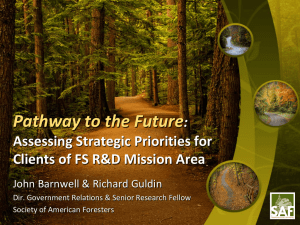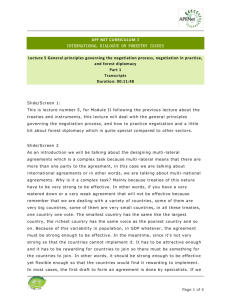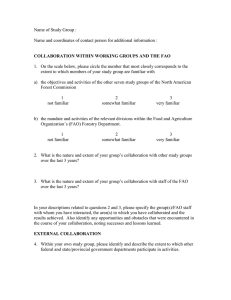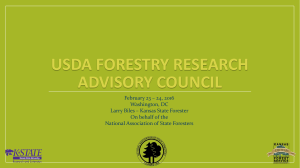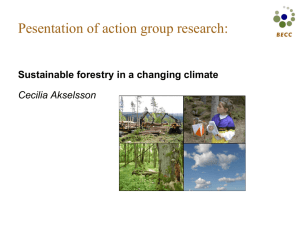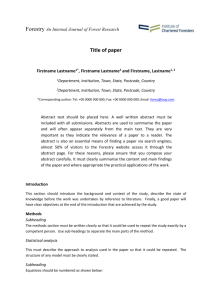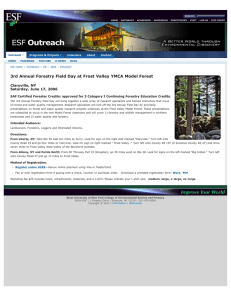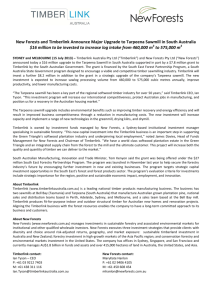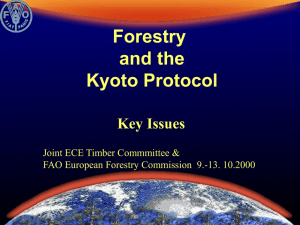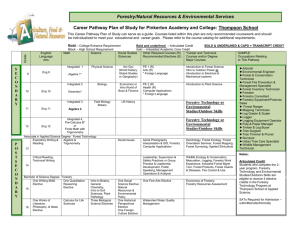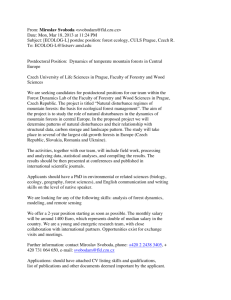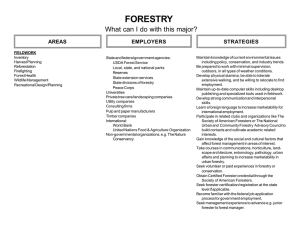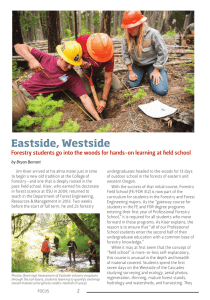241A1 – Sustainable Management Of Natural Forests And Woodlands
advertisement
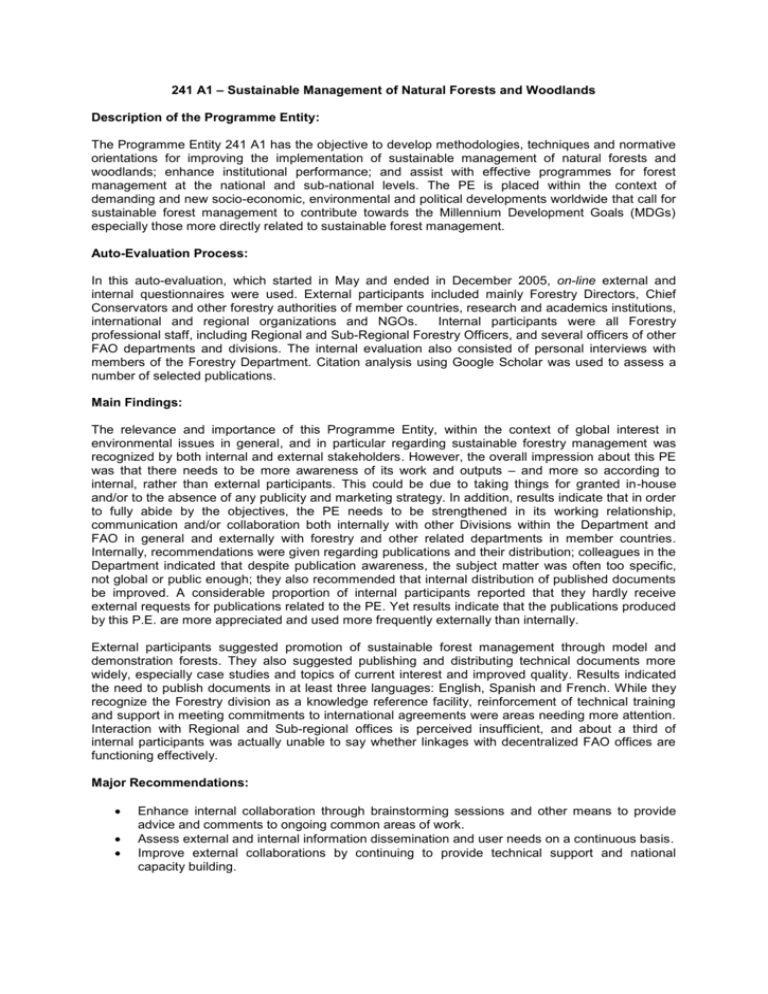
241 A1 – Sustainable Management of Natural Forests and Woodlands Description of the Programme Entity: The Programme Entity 241 A1 has the objective to develop methodologies, techniques and normative orientations for improving the implementation of sustainable management of natural forests and woodlands; enhance institutional performance; and assist with effective programmes for forest management at the national and sub-national levels. The PE is placed within the context of demanding and new socio-economic, environmental and political developments worldwide that call for sustainable forest management to contribute towards the Millennium Development Goals (MDGs) especially those more directly related to sustainable forest management. Auto-Evaluation Process: In this auto-evaluation, which started in May and ended in December 2005, on-line external and internal questionnaires were used. External participants included mainly Forestry Directors, Chief Conservators and other forestry authorities of member countries, research and academics institutions, international and regional organizations and NGOs. Internal participants were all Forestry professional staff, including Regional and Sub-Regional Forestry Officers, and several officers of other FAO departments and divisions. The internal evaluation also consisted of personal interviews with members of the Forestry Department. Citation analysis using Google Scholar was used to assess a number of selected publications. Main Findings: The relevance and importance of this Programme Entity, within the context of global interest in environmental issues in general, and in particular regarding sustainable forestry management was recognized by both internal and external stakeholders. However, the overall impression about this PE was that there needs to be more awareness of its work and outputs – and more so according to internal, rather than external participants. This could be due to taking things for granted in-house and/or to the absence of any publicity and marketing strategy. In addition, results indicate that in order to fully abide by the objectives, the PE needs to be strengthened in its working relationship, communication and/or collaboration both internally with other Divisions within the Department and FAO in general and externally with forestry and other related departments in member countries. Internally, recommendations were given regarding publications and their distribution; colleagues in the Department indicated that despite publication awareness, the subject matter was often too specific, not global or public enough; they also recommended that internal distribution of published documents be improved. A considerable proportion of internal participants reported that they hardly receive external requests for publications related to the PE. Yet results indicate that the publications produced by this P.E. are more appreciated and used more frequently externally than internally. External participants suggested promotion of sustainable forest management through model and demonstration forests. They also suggested publishing and distributing technical documents more widely, especially case studies and topics of current interest and improved quality. Results indicated the need to publish documents in at least three languages: English, Spanish and French. While they recognize the Forestry division as a knowledge reference facility, reinforcement of technical training and support in meeting commitments to international agreements were areas needing more attention. Interaction with Regional and Sub-regional offices is perceived insufficient, and about a third of internal participants was actually unable to say whether linkages with decentralized FAO offices are functioning effectively. Major Recommendations: Enhance internal collaboration through brainstorming sessions and other means to provide advice and comments to ongoing common areas of work. Assess external and internal information dissemination and user needs on a continuous basis. Improve external collaborations by continuing to provide technical support and national capacity building. Promote sustainable forest management more through publishing case studies illustrating model and demonstration forests, technical training and capacity building, especially in meeting commitments to international agreements. Improve channels of interaction with Regional and Sub-regional offices.

